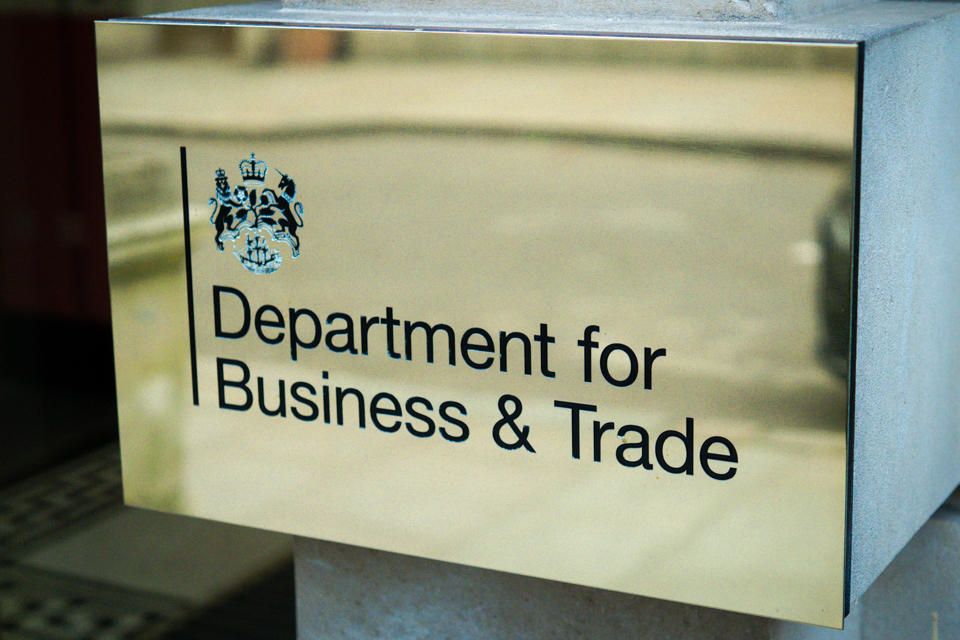UK pay growth leaps to 5.2%, reducing chances of interest rate cut

UK pay growth accelerated to 5.2% in October, putting pressure on the Bank of England to resist calls for lower interest rates when policymakers meet later this week.
The Office for National Statistics (ONS) said annual growth in employees’ average earnings – which had been slowing for more than a year – jumped after a significant rise in wages paid for skilled workers in the manufacturing sector.
Wages rose 4.4% including bonuses and 4.9% excluding bonuses in the three months to September, but both hit 5.2% in the three months to October.
The rise in pay for factory workers to 6% meant the split between civil servants and private sector employees widened. Annual average regular earnings growth was 5.4% for the private sector and 4.3% for the public sector, the ONS said.
The ONS director of economic statistics, Liz McKeown, said: “After slowing steadily for over a year, growth in pay excluding bonuses increased slightly in the latest period, driven by stronger growth in private sector pay.
“Pay growth including bonuses increased by more, but this reflects previous figures being affected by the one-off payments made to some public sector employees in 2023.”
Policymakers at the Bank of England are likely to be wary of cutting interest rates while pay growth remains strong, fearing that businesses will pass on most of the cost to consumers through higher prices.
Monica George Michail, an economist at the National Institute of Economic and Social Research, said the combination of high average pay growth and low inflation meant most workers were enjoying significant real income gains, which could increase demand in the shops, putting further pressure on shops to raise prices.
“However, given the slowdown in recruitment activity and rising unemployment, we expect wage growth to slow in the coming months, although the rise in national living wage in April would exert some upward pressure.
“We expect the Bank of England to gradually cut rates in 2025 as wage growth moderates and inflation stabilises.”
City traders adjusted their expectations for UK interest rate cuts after the release of the ONS figures. Financial markets indicated there was only a 7% chance that the central bank will cut interest rates on Thursday, down from about 15% on Monday.
Interest rates, now at 4.75%, are expected to fall to about 4.1% in December 2025.
The ONS said real incomes – the difference between inflation and wage rises – had risen by 2.2% over the past year when using the consumer prices index including owner occupiers’ housing costs.
Early estimates of the total number of employees in November showed a fall of 35,000 but this came after a rise of 24,000 in October, indicating that the jobs market remains stable after Labour’s budget.
There were 818,000 job vacancies in September to November 2024, down 33,000 on the previous three months, although still 22,000 above levels before the Covid pandemic. Unemployment remained steady at 4.3%.
after newsletter promotion
Business groups said the full impact of the budget was yet to be seen in the figures and that their surveys showed employers were worried about the year ahead and holding back on hiring.
The British Chambers of Commerce said the rise in employer national insurance contributions and an increase in the national living wage from next Aprilmeant firms were facing difficult decisions.
“Many [firms] say they will have to raise prices, put recruitment and investment plans on hold and look for other ways to reduce their costs,” the lobby group said.
The Institute of Directors said the employment rights bill planned by Labour was another factor “damaging hiring intentions by increasing the cost and risk of employing staff”.
Its own surveys suggested employer hiring intentions were at their lowest point since May 2020 this month, and that 43% of businesses that face higher national insurance bills plan to reduce employment in response.
Joe Nellis, an economics professor at the Cranfield School of Management, said the lack of any significant rise in unemployment disguised a larger problem : the stubbornly high number of adults classified as economically inactive.
“This number has remained at well over 9 million in recent years and makes up over 20% of the UK’s working age population,” he said.
Liz Kendall, the work and pensions secretary, said getting people back into the workforce was a priority for the government. “Today’s figures are a stark reminder of the work that needs to be done,” she said.
Analysis of the ONS data by the British Retail Consortium showed that retailers employ 225,000 fewer people than five years ago as the shift to online shopping and new technology have reduced the number of jobs needed in stores.
Related
Why investing in women is a vital next step for…
Get Nadine White's Race Report newsletter for a fresh perspective on the week's newsGet our free newsletter from The Independent's Race CorrespondentGet our fre
Business secretary signals major shift on electric car policy to…
In a determined effort to retain Nissan’s manufacturing presence in Britain, Business Secretary Jonathan Reynolds has vowed to implement “substantial c
Joint Statement: Business Secretary and Fujitsu Services Ltd
Business and Trade Secretary Jonathan Reynolds today (Friday 7 March) met chiefs for Fujitsu in Tokyo to begin talks over the cost of redress for victims of th
UK foreign secretary backs multilateral defence funding for Europe
UK foreign secretary David Lammy has said that a new multilateral fund will be needed to secure Europe’s defence as he confirmed that Britain is “open to”













